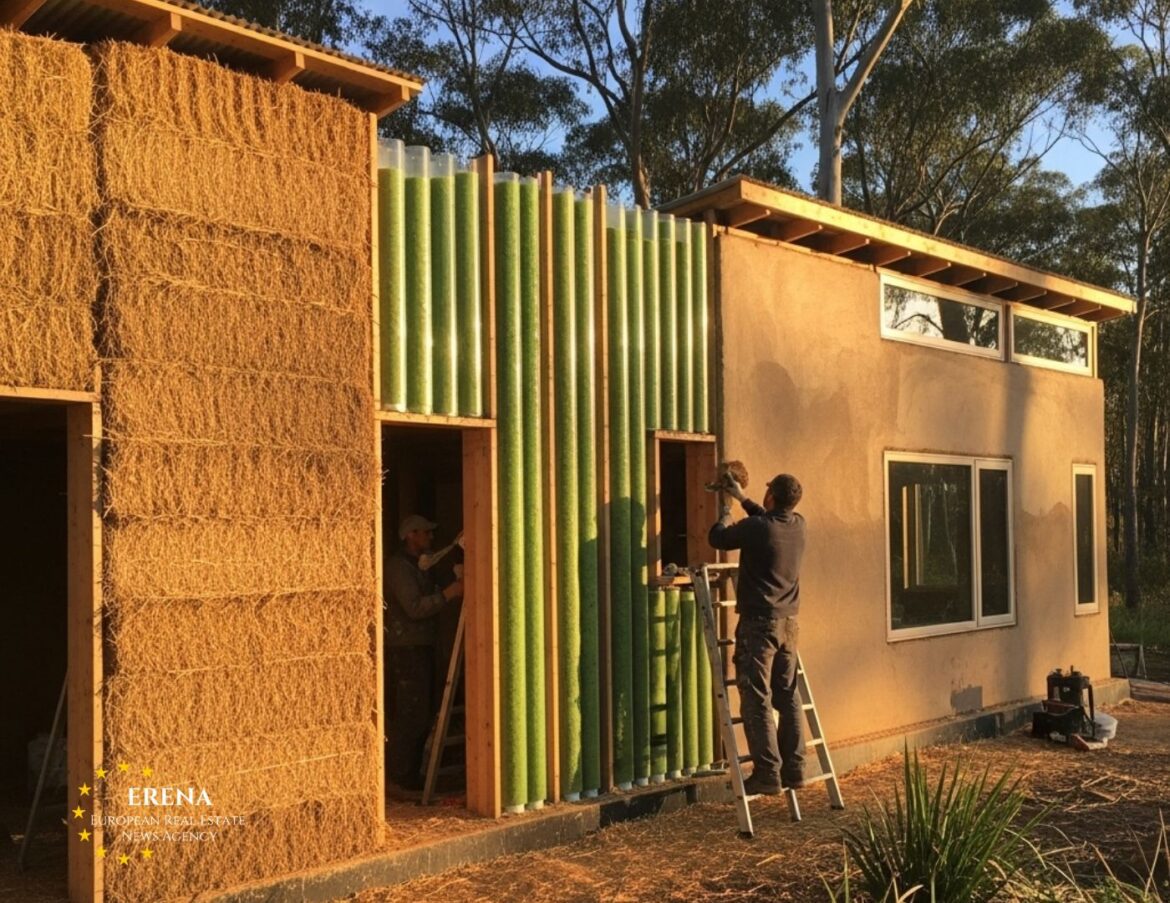In response to growing climate challenges, increasing demand for sustainable living, and the need to reduce CO₂ emissions, Europe is experiencing a revival of traditional and natural materials in construction. Straw, clay, and even seaweed are becoming viable alternatives to conventional building resources like concrete, brick, and synthetic insulation. These materials are not only eco-friendly but also energy-efficient and durable, and homes built with them are appearing across Europe — from Germany and Denmark to France and Spain.
Straw Homes: Back to the Roots
Straw is one of the oldest building materials, widely used in Europe during the Middle Ages. Today, it is making a comeback due to its outstanding properties: high thermal insulation, breathability, affordability, and extremely low carbon footprint.
Construction Method
Modern straw homes are typically built using timber frames filled with compressed straw bales, which are then coated with clay or lime plaster. These structures meet European standards for insulation, fire safety, and structural stability.
Costs and Examples
In Germany, the average cost of building a straw bale house ranges from €1,200 to €1,800 per m² — comparable to conventional construction. However, significant savings are achieved in heating and insulation. In Alsace, France, a 120 m² straw home was completed for approximately €170,000.
France’s RFCP (Réseau Français de la Construction Paille) promotes standards and certification for straw-based construction. In Austria and the Czech Republic, multi-family housing projects using straw are already in use.
Clay and Earth Homes: Ancient Techniques in a Modern Format
Clay is a natural material with excellent thermal regulation properties. When mixed with sand and straw, it creates adobe or cob — highly durable and moldable substances used for centuries.
Thermal Comfort and Energy Efficiency
Clay walls naturally regulate indoor temperature by absorbing heat during the day and releasing it at night. This property is especially beneficial in countries with fluctuating temperatures, such as Spain or regions of Central Europe.
Cost Efficiency
In Poland and Hungary, building with locally sourced clay reduces construction costs to between €800 and €1,100 per m². In Bulgaria, a 100 m² adobe home built with volunteer help and local craftsmen cost only around €50,000.
Modern Adaptations
Today’s earth homes integrate renewable energy solutions such as solar panels, passive ventilation systems, and water-saving technologies. Architects in Switzerland and Germany are combining clay and timber to create ultra-sustainable buildings with minimal environmental impact.
Seaweed Homes: Innovation from the Coast
Seaweed — particularly eelgrass (Zostera marina) — is an unconventional but increasingly explored construction material. It serves as insulation, roofing, and even cladding, especially in coastal regions.
From Tradition to Innovation
On the German island of Fehmarn, century-old houses with seaweed roofs still exist. In Denmark, the Modern Seaweed House on Langeland Island combines traditional building practices with modern architecture. Seaweed is naturally fire-resistant, pest-resistant, and offers excellent insulation and soundproofing.
Environmental Benefits
When harvested responsibly, seaweed has minimal ecological impact. Unlike synthetic materials, it requires no chemical treatment and sequesters carbon both during its growth and after construction, contributing to negative-emission building strategies.
Availability and Cost
Seaweed homes remain experimental and relatively rare, with current costs up to €2,000 per m². However, broader adoption and scaling could reduce prices. Subsidies and pilot programs are under discussion in countries like Germany and Denmark.
Regulation and Standards
Construction with natural materials is increasingly supported by regulatory frameworks across Europe. Germany has implemented DIN standards for straw and clay buildings. France and Belgium offer technical approvals (ATec) that simplify the permitting process for natural constructions.
EU programs such as Horizon Europe and LIFE fund zero-carbon and nature-based construction projects, encouraging innovation and adoption of these methods.
Education and Professional Training
More training centers and workshops are emerging across Europe, focusing on building with straw, clay, and other ecological materials. In France, organizations like Les Grands Ateliers and Amàco run professional programs for architects, builders, and students. Germany, Austria, and the Netherlands also host specialized academies for sustainable building techniques.
As ecological awareness grows, more architects and engineers are incorporating these materials into mainstream residential and commercial designs.
Public Perception and Market Growth
Historically, homes built with natural materials were seen as rudimentary or low-cost. Today, that perception is changing. Increasing numbers of such homes are being constructed in suburban areas of Copenhagen, Lyon, and Munich. In 2024, sales of straw and clay homes in Germany rose by 12%, and by 18% in the Netherlands.
Interest is growing not only among environmental enthusiasts but also among young families, freelancers, and hospitality investors. Eco-friendly homes are becoming attractive long-term assets with growing market value.
Conclusion
Straw, clay, and seaweed are not just relics of the past — they represent a sustainable future for the construction industry. These materials enable the creation of energy-efficient, healthy, and aesthetically appealing homes with minimal environmental impact. The European real estate market is showing a steady increase in interest in natural building technologies, supported by regulatory frameworks and financial incentives.
In the face of climate urgency, natural material-based construction is poised not to remain a niche — but to become a new mainstream standard.

